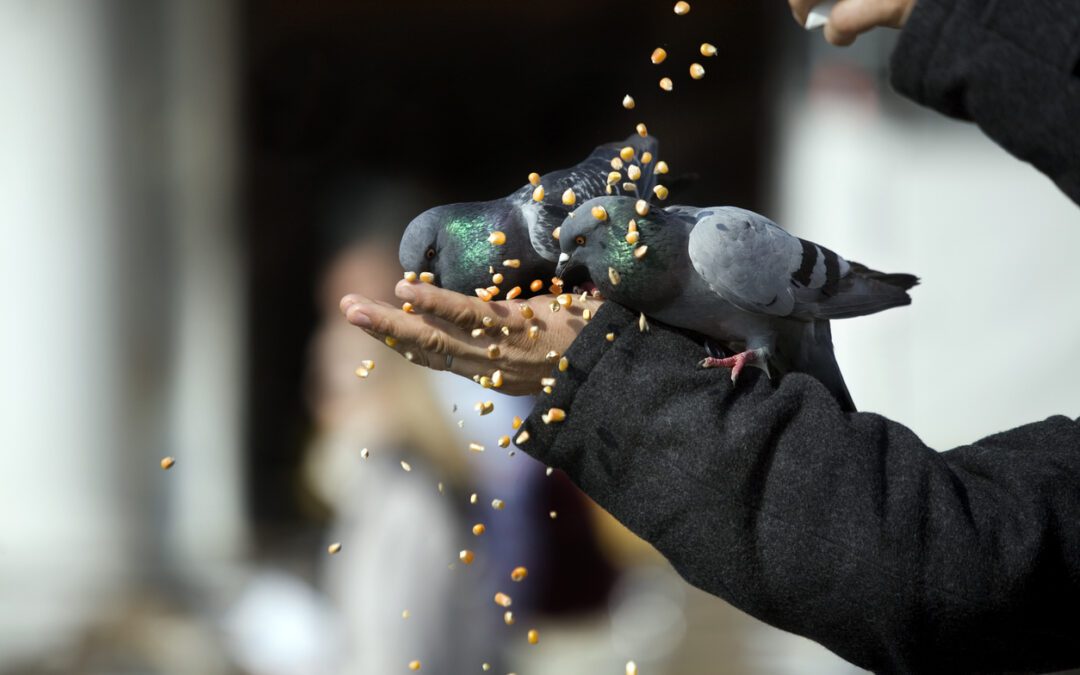
by Pigeon Patrol | Sep 25, 2024 | Bird Netting, Bird Spike, Columbidae, Doves, Pigeon Spikes, Pigeons in the News, Raccoons
Pigeons are one of the few species of wild animal with which town and city dwellers have regular contact, so they are popular with a lot of people. However, the cost of cleaning their droppings from buildings and statues can be considerable and pigeon welfare can be adversely affected by overcrowding.
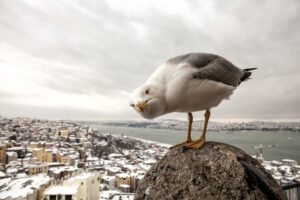
Bosphorus in İstanbul,Turkey.
There are many places world-wide where attempts have been made to control pigeons by culling. Culling methods have included poisoning, shooting with air rifles and trapping. However, modern scientific research (1) shows that culling is completely ineffective, as bird numbers can increase above pre-cull levels within weeks of the cull being carried out.
Why is culling promoted?
Pest control companies are fully aware that culling is ineffective but they continue to recommend this option because it ensures that they will be offered a lucrative long-term contract.
Why is culling ineffective?
In areas where culling is carried out, there will be an initial reduction in pigeon numbers. However, this effect is very short term as the population will almost certainly have returned to or even exceeded the previous level within a few weeks. This is because pigeons control their own numbers according to the food source available.
Approximately 90% of pigeons die in their first year and the main cause of death is starvation. The mortality rate of adult pigeons is very low, typically around 11% (2). Therefore when culling is carried out on a pigeon population, the vacancies left by the dead birds are quickly filled by young birds.
This means that killing adult pigeons in a flock discriminates in favour of young birds who would otherwise have perished. It has no long-term effect on the level of population, as it merely rejuvenates the flock.
A culling programme was carried out in Basel, Switzerland; a city which had a population of approximately 20,000 pigeons. From 1961-85, 100,000 pigeons were culled by shooting and trapping. Despite this, the population remained stable.
In 1988 a group called Pigeon Action was founded to establish an ecological and long term solution to the city’s pigeon issue. They began a programme of public education campaigns which warned against feeding pigeons and installed pigeon lofts from which eggs were removed. As a result, the population was halved within four years.
Other arguments against culling
Culling is an extremely expensive option, as a long-term contract with pest controllers will have to be entered into because regular repeat culls will be necessary. Culling by poison puts other species at risk because it is both indiscriminate and because poisoned birds will affect other animals in the food chain. Cats and birds of prey may consume poisoned pigeons with fatal results.
Narcotics have been used to stupefy pigeons and make them easier to catch. However, this culling method can have disastrous consequences, with drugged birds disrupting traffic and smashing into buildings. This happened in Perth, Australia in 1999. Narcotics and poison are both very inhumane as the pigeons taking the bait will die slowly and may suffer dehydration and hypothermia.
Shooting is a widely-used culling method which also results in suffering as the majority of birds shot are wounded, rather than killed. There have been many reports of injured birds being thrown into bin bags or stamped upon by pest control operatives. Young chicks are also left to slowly perish.
Trapping of pigeons is also widespread. Apart from the risk that trapped birds are sometimes left to die from exposure, this culling method is also very time-consuming and expensive.
What are the alternatives?
There are three approaches to pigeon control which do not involve culling. They are the use of deterrents, the installation of artificial nesting sites and public education campaigns.
Deterrents
Deterrents such as spikes, holograms of owls’ eyes and wire systems can be very effective at preventing pigeons from roosting on buildings.
Netting is often used on buildings, but it can result in young flightless birds being trapped behind it and flying birds can become tangled and injured. The RSPCA and wildlife groups receive thousands of reports every year of pigeons and other birds trapped by netting.
Trained raptors (birds of prey) have been used in some areas to drive away pigeons. These birds are trained to chase, but not kill pigeons and can successfully drive a flock elsewhere. In some enclosed sites, such as railway stations, the use of raptors can be extremely effective. However, this method is expensive and will only work on a specific site, so is unsuitable for large areas.
The use of falconry to control pigeons involves pigeons being caught and killed. Nottingham City Council tried this method in 1999 but the sight of pigeons being attacked by the bird resulted in public distress, lots of negative publicity and cost thousands of pounds, whilst having no overall effect on pigeon numbers.
The problem with all deterrent methods is that the pigeons driven away from one site will simply re-locate to another, equally unsuitable site. Therefore, this form of control has limited use unless employed in conjunction with other methods.
Artificial Nesting Sites
Dovecotes or nesting boxes can be constructed and installed for a low, one-off cost. Once the pigeons have been encouraged to roost in these sites, their eggs can be collected regularly and destroyed. This is a simple, fast and very effective way to reduce pigeon numbers. It is also humane, as no killing is involved. Another advantage of dovecotes or nesting boxes is that they provide a way to move pigeon flocks away from sites where they are considered a nuisance to sites where they will pose no problems. Designated feeding areas can then be set up for public use.
Public Education Campaigns
The only effective long-term method of reducing pigeon populations is to manipulate their environment in such a way that they can no longer eat or roost easily. Each breeding pair can produce up to ten chicks per year if they have an abundant food supply, but if available food is reduced, their breeding rate slows down and can even stop altogether.
Large numbers of people regularly feed pigeons in the belief that they are caring for the birds. Litter also provides an abundant food supply to pigeons in towns and cities. As the mortality rate of adult pigeons is so low, there is strong competition for food and breeding sites.
Pigeon overpopulation is caused by large quantities of food being provided by the public. Therefore, it is essential to educate people to either stop feeding pigeons or to do so in designated areas near artificial nesting sites.
In Basel, Pigeon Action embarked on a campaign to convince the public that feeding pigeons harms them, as it causes overpopulation. They produced leaflets and posters and distributed them widely. These featured pictures of baby pigeons infected by diseases and pushed the point that overcrowding is bad for pigeons as well as people.
A successful publicity campaign will result in a large reduction in people feeding pigeons and will impose a very effective limit to their population size. Sheffield City Council produced colour leaflets which explained clearly to people why they should stop feeding pigeons. Leaflets such as these, together with signs in the relevant places should ensure that the message gets through.
Case studies
Nottingham City Hospital
Following a visit from Guy Merchant of PICAS in May 2000, the hospital suspended lethal culling of pigeons.
An on-site pest controller was employed, who proofed many sensitive areas and installed nest boxes on several large flat roofs which were heavily populated by pigeons. These were made from recycled staff lockers. The pigeons were then provided with food, water and nesting materials near the boxes in order to encourage the birds to roost there. The pest-controller visited these roosting sites daily in order to remove eggs. Hatchlings were left alone.
The result: “The impact on the trust has been dramatic. In less than a year, the bird population has reduced by an estimated 50%. The cost of cleaning fouling has also reduced significantly.” Statement made in March 2001 by Clive Young, Environmental Services Manager at Nottingham City Hospital NHS Trust.
Barking and Dagenham District Council
As a result of public pressure, this Council decided to explore alternatives to culling pigeons. A colour leaflet was produced which urged the public not to feed pigeons and to dispose of food litter properly.
Council properties, including high-rise flats were proofed in order to reduce the potential breeding sites available to the pigeons. In July 2000 a dovecote was opened in the park which had been identified as the main public feeding site. This generated a lot of very positive publicity.
This Council took some very positive action to reduce pigeon numbers, but their dovecote was designed with aesthetic appearance as the priority, rather than its attractiveness to pigeons and many nearby buildings were not proofed.
Railtrack
Railtrack abandoned culling at London mainline stations in 1999 and began to employ the services of a trained raptor and handler, as advised by PICAS. This proved extremely successful and other train operators are now exploring this option.
Summary
Lethal control of pigeons by culling has been consistently shown to have no long-term effect on population levels. It is also expensive, inhumane and can result in very negative publicity. Extensive research and recent case studies have shown that the use of artificial breeding sites, combined with egg removal, proofing of buildings and public education campaigns can result in a long term reduction of pigeon populations by as much as 50% within months. These control methods are humane, cost-efficient and will generate positive publicity.
The feral pigeon is descended from the rock dove whose natural habitat is cliffs and caves. Large buildings and statues offer pigeons roosting sites which closely resemble these. This, combined with their resourcefulness, tendency to scavenge and lack of territorial aggression has led to large flocks of pigeons living in close proximity with people.
Although it is widely believed that pigeons carry and spread diseases to people, there is very little evidence that pigeons jeopardise human health. (3) Pigeon lung disease is an allergic reaction which affects some people who have prolonged contact with pigeons in confined places. It is easily treated if diagnosed early and can be avoided by wearing a mask if in contact with pigeons in a dusty environment.
Pigeon Patrol
Pigeon Patrol Products & Services is the leading manufacturer and distributor of bird deterrent (control) products in Canada. Pigeon Patrol products have solved pest bird problems in industrial, commercial, and residential settings since 2000, by using safe and humane bird deterrents with only bird and animal -friendly solutions. At Pigeon Patrol, we manufacture and offer a variety of bird deterrents, ranging from Ultra-flex Bird Spikes with UV protection, Bird Netting, 4-S Bird Gel and the best Ultrasonic and audible sound devices on the market today.
Canada’s top wholesaler for bird deterrent products for twelve consecutive years.
Contact us at 1- 877– 4– NO-BIRD, (604) 585-9279 or visit our website at https://www.pigeonpatrol.ca/
Bird Gone, Pigeon Gone, Pigeon problems, pigeon spikes, 1-877-4NO-BIRD, 4-S Gel, Bird Control, Pigeon Control, bird repellent, Bird Spikes, sonic bird repellent, stainless steel bird spikes, bird spikes Vancouver, Ultra Sonic Bird Control, Bird Netting, Plastic Bird Spikes, Canada bird spike deterrents, Pigeon Pests, B Gone Pigeon, Pigeon Patrol, pest controller, pest control operator, pest control technician, Pigeon Control Products, humane pigeon spikes, pigeon deterrents, pigeon traps, Pigeon repellents, Sound & Laser Deterrents, wildlife control, raccoon, skunk, squirrel deterrent, De-Fence Spikes, Dragons Den, Pigeon, Pigeon Patrol, Pigeons Roosting, Vancouver Pigeon Control, Bird Spikes, Bird Control, Bird Deterrent, Pigeon Deterrent, Surrey Pigeon Control, Pest, Seagull deterrent Vancouver Pigeon Blog, Birds Inside Home De-fence, Pigeon Nesting, Bird Droppings, Pigeon Dropping, woodpecker control, Keep The Birds Away, Birds/rats, seagull, pigeon, woodpecker, dove, sparrow, pidgeon control, pidgeon problem, pidgeon control, flying rats, pigeon Problems, bird netting, bird gel, bird spray, bird nails, bird guard, Pigeon control, Bird deterrents, Pigeon deterrents, Bird control, solutions, Pigeon prevention, Pigeon repellent, Bird proofing, Pest bird management, Pigeon spikes, Bird netting, Humane bird control, Bird exclusion, Urban bird control, Anti-roosting devices, Pigeon removal, Bird barriers
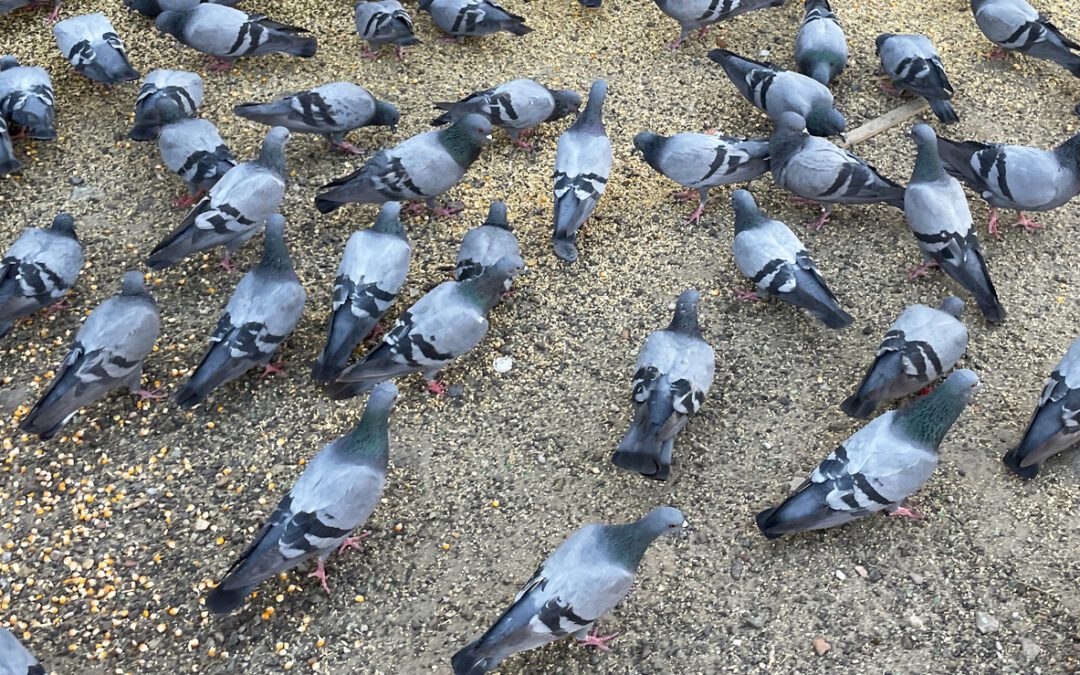
by Pigeon Patrol | Sep 25, 2024 | Bird Deterrent Products, Bird Law, Bird Netting, Columbidae
Pigeons are more often mocked than their avian brethren. But human beings have relied on pigeons for centuries to act as messengers, a reliable early post system — or in one case, a news bulletin. The birds possess remarkable navigation abilities, which is why on a summer morning in France in 1997, 60,000 pigeons were released to mark the centenary of the Royal Pigeon Racing Society with a cross channel flight. The problem? Most of them never came back. It was dubbed the “the great pigeon race disaster” and baffled experts and pigeon fanciers alike. But this week, OTM correspondent Micah Loewinger sits down with Robert Krulwich, co-creator and former co-host of Radiolab, and Jon Hagstrum, a geophysicist emeritus at the U.S. Geological Survey, to try and figure out exactly what exactly happened.
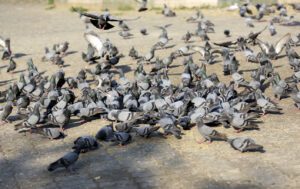
Flock of Pigeons crowded on the floor outdoor landscape close up.
Pigeon Patrol
Pigeon Patrol Products & Services is the leading manufacturer and distributor of bird deterrent (control) products in Canada. Pigeon Patrol products have solved pest bird problems in industrial, commercial, and residential settings since 2000, by using safe and humane bird deterrents with only bird and animal -friendly solutions. At Pigeon Patrol, we manufacture and offer a variety of bird deterrents, ranging from Ultra-flex Bird Spikes with UV protection, Bird Netting, 4-S Bird Gel and the best Ultrasonic and audible sound devices on the market today.
Canada’s top wholesaler for bird deterrent products for twelve consecutive years.
Contact us at 1- 877– 4– NO-BIRD, (604) 585-9279 or visit our website at https://www.pigeonpatrol.ca/
Bird Gone, Pigeon Gone, Pigeon problems, pigeon spikes, 1-877-4NO-BIRD, 4-S Gel, Bird Control, Pigeon Control, bird repellent, Bird Spikes, sonic bird repellent, stainless steel bird spikes, bird spikes Vancouver, Ultra Sonic Bird Control, Bird Netting, Plastic Bird Spikes, Canada bird spike deterrents, Pigeon Pests, B Gone Pigeon, Pigeon Patrol, pest controller, pest control operator, pest control technician, Pigeon Control Products, humane pigeon spikes, pigeon deterrents, pigeon traps, Pigeon repellents, Sound & Laser Deterrents, wildlife control, raccoon, skunk, squirrel deterrent, De-Fence Spikes, Dragons Den, Pigeon, Pigeon Patrol, Pigeons Roosting, Vancouver Pigeon Control, Bird Spikes, Bird Control, Bird Deterrent, Pigeon Deterrent, Surrey Pigeon Control, Pest, Seagull deterrent Vancouver Pigeon Blog, Birds Inside Home De-fence, Pigeon Nesting, Bird Droppings, Pigeon Dropping, woodpecker control, Keep The Birds Away, Birds/rats, seagull, pigeon, woodpecker, dove, sparrow, pidgeon control, pidgeon problem, pidgeon control, flying rats, pigeon Problems, bird netting, bird gel, bird spray, bird nails, bird guard, Pigeon control, Bird deterrents, Pigeon deterrents, Bird control, solutions, Pigeon prevention, Pigeon repellent, Bird proofing, Pest bird management, Pigeon spikes, Bird netting, Humane bird control, Bird exclusion, Urban bird control, Anti-roosting devices, Pigeon removal, Bird barriers
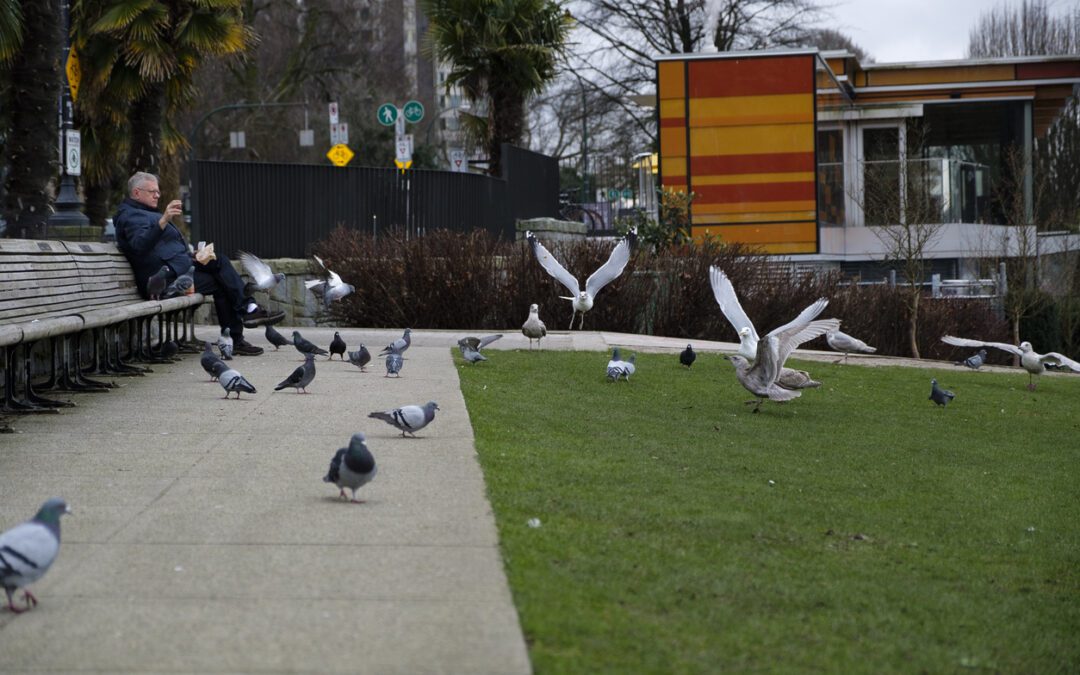
by Pigeon Patrol | Sep 25, 2024 | Bird Deterrent Products, Bird Netting, Bird Spikes, Columbidae
A man feeds the pifeons in Times Square in 1949 (and was probably beaten a short time later.)
Rats with wings, or majestic streetwise bird? It’s a debate that’s raged almost as long as New York City has been called that. And this week, the war between the two sides boiled over again.

Injured peace dove, crossing out word “PEACE” that on the road sign. (Used clipping mask)
It started when the exclusive University Club had its feathers ruffled. It wanted to drape its storied building in netting, to protect it from pigeon poo, which eats away at stone and metal. But the Landmarks Commission said it would have to wait for approval, as it would be a “visible change” to the landmarked Italian Renaissance building’s façade. As if the crap wasn’t a “visible change” enough.
Meanwhile, over on East 93rd Street, there was a scuffle involving longtime pigeon activist Anna Dove and her neighbor, who snatched away her bag of seed after he saw her feeding the pigeons on the sidewalk. The police were summoned.
“It’s disgusting,” said her nemesis, retired teacher Arthur Schwartz. “She’s feeding the rats.”
And with the live pigeon-shooting state championships in Pennsylvania coming up, it’s almost guaranteed that there will be an increase in demand of pigeon-poaching — New York City is a favorite spot for trapping them and transporting them to be used as live targets. The animal-rights activists will be out with their cameras and signs to stop them.
AD
No matter which side you’re on, one things for certain — by the end, things are going to get a little birdbrained.
*
“It’s not the pigeons that are the problem, it’s the number of them,” says Andrew D. Blechman, author of “Pigeons: The Fascinating Saga of the World’s Most Revered and Reviled Bird.” “They’re gentle creatures. The problem is that they get in our face, just like we get in each other’s faces.”
No one one’s quite sure of how many pigeons are in New York City. One adage is “one pigeon per person,” which would put their numbers at about 7 million. They each produce about 25 pounds of waste per year.
Pigeons love cities because of the many ledges, windowsills, eaves and rooftops available for them to roost in, which mimics their natural habitat of high cliffs. Pigeon pairings are monogamous, often mating for life, and both parents raise the babies — called squab — for a time, sitting on the eggs in shifts.
The pigeon includes about 298 species of bird, but the Rock Dove is the most common to the New York area, according to the Parks Department. The grey, bobbing-headed birds usually have purple-green iridescence around the neck area. They’re the scruffiest members of the dove family — although “dove” usually connotes the pure white symbols of peace, not the pizza scavengers of city streets. (Just say they’ve been pigeonholed.)
“If they were white,” Blechman says, “people would love them.”
Blame the French for our pigeon problems. The little pluckers first arrived in the early 1600s with French settlers who used them for meat. They were easy to raise — they could be kept in a barn, where they’d perch on the rafters, and young pigeons served as a good source of protein.
But they soon escaped their confines and went feral.
City life agreed with them and allowed them to flourish — and in some cases, over-flourish. Their natural predators, like falcons and hawks, aren’t found here in great numbers.
Courtney Humphries, author of “Superdove: How the Pigeon Took Manhattan . . . And the World,” concedes that pigeon are pilloried partly because of their “persistence. They nest on the buildings we consider our territory, and they don’t like to be moved.”
The average city pigeon has a lifespan of three to five years. With all the food scattered throughout the garbage cans and sidewalks — plus well-meaning human feeders — they spend less time looking for grub, which leaves more time for mating.
“The biggest problem is the people who overfeed them,” says Blechman. “Every city has about a dozen of them, and they’re the ones who cause the [overpopulation] problem.”
He suggests that if you want to feed the birds, hand out just a teaspoon full of birdseed for a flock. “It’s just enough to give them a little extra energy while they’re out trying to find their own food.”
“If nobody fed pigeons, I think things would look a lot different,” agrees Humphries, who says that human feeders end up creating dense flocks. “A lot of the problem with pigeons comes from people.”
If you can’t freeze the hearts of little old ladies, though, you could try eating them (the pigeons, that is). Squab — baby pigeons that haven’t flown yet — is on the menu at many restaurants around the city, particularly French. They’re “basically the milk-fed veal of the sky,” says Blechman — tender, mostly dark meat, and one of the only poultry that can be eaten rare. (Pigeons produce their own milk-like substance, which they feed to their young by regurgitation.)
Pigeon pot pie was a huge colonial favorite. Today, try the Squab and Foie Croustillant at the Modern, Danny Meyer’s restaurant at the Museum of Modern Art.
*
Unless the appetite for squab skyrockets, New York’s options are few. Avicide — poisoning birds — was made illegal in 2000, when the state Legislature passed a bill outlawing the use of “flock dispersal agents” like Avitrol in cities with more than 1 million people.
Before that, property managers regularly hired pest control services to dole out Avatrol to flocks of pigeons.
“In theory, you would mix it with feed, and when one pigeon ate some of the treated food, they would begin to suffer from neurological toxicity,” explained Stephanie Boyles, wildlife expert at the Humane Society of the United States. “When their flockmates saw them suffering, it would prompt them to leave the area.”
In practice, however, overdosing often led to large numbers of birds convulsing and writhing in pain on the street before their deaths. Welcome to New York!
The last major flare-up between pigeons and people was in 2007, when City Councilman Simcha Felder released a report plaintively titled, “Curbing the Pigeon Conundrum.”
Claiming that their droppings carried a host of diseases like histoplasmosis, he proposed a $1,000 fine to anyone feeding them, as well as curbing their numbers through birth control (a measure that cities like Los Angeles have adopted, although some argue that it’s unsustainable), and appointing a city “Pigeon Czar” to oversee other pigeon-control issues.
The NYC Department of of Health and Mental Hygiene maintains that contact with their droppings only poses a small health risk, and that “routine cleaning of droppings (e.g. from windowsills) does not pose a serious health risk to most people,” although disposable gloves are a good idea.
The Humane Society came out against the anti-feeding fine because they weren’t sure it would actually make a difference in reducing flocks, said Boyles. “We still suggest working with communities to create places where pigeons are welcome, and discouraging them where they’re not.”
While Felder’s bill didn’t fly, it was only one of many efforts to keep pigeons clipped.
In 2006, pigeon loitering was so dense near the Army Recruitment Center in Times Square, speakers were set up to broadcast sounds of falcons and pigeons being attacked, in hopes of scaring them away. In 2003, they had so overwhelmed Bryant Park that the operators invited a falconer and his hawk to the park for a week to scare away (not eat) the pigeons.
In 2007, the MTA installed Bird-B-Gone on some of its elevated stations along the 7 line, as well as others. The electronic system zapped birds that got too close.
In the ’80s, plastic owls were a big seller. Today, a slightly more high-tech version, called the RoboHawk, moves its head, wings, and makes what its creators hope are pigeon-threatening sounds.
Every so often, a politician considers reviving an overall anti-feeding bill, since, for now, it’s only illegal in city parks where signs are posted (the fine is usually $50).
Some cling to the hope that the city will come to its senses and declare war. Because they’re a non-native species, pigeons are not protected by either the Federal Migratory Birds Act or New York state laws. Can anyone say hunting season?
It’s got to be done mafia-style, though. Culling is only a temporary solution — as with most wild birds, quick breeding will put their numbers back to pre-cull figures within weeks, according to Pigeon Control Advisory Service.
*
But spare a thought, pigeon haters, for your majestic foe. Pigeons have more qualities than you think.
Although city birds aren’t particularly active, pigeons are built to be athletes — a trained bird can fly up to 60 miles per hour, and they can stay in the air for 500 miles. They’re meant for flying long distances, and have “homing” instincts, which means they will naturally find their way back.
This talent is why they were literally drafted into the United States Army Pigeon Service.
A million served in both world wars, where they delivered messages across enemy lines and saved thousands of soldiers’ lives. One pigeon, Cher Ami, won a French medal for his bravery for flying through gunfire, finally delivering the message dangling from what was left of his foot. He’s now stuffed and in the Smithsonian.
The army’s Pigeon Breeding and Training Center was based at Fort Monmouth, NJ, and opened in 1917. Many of its “Pigeoneers” were “basically just boys out of Brooklyn, and they’d just bring their best birds,” Humphries says. (The training center was closed in 1957 when the Army stopped using them as messengers.)
Keeping pigeons on rooftops — and racing them — used to be much more popular. Who can forget Marlon Brando’s character in the 1954 film “On the Waterfront” shouting up to his friend Joey, “I got one of your birds!” right before Joey “accidentally” falls off the roof?
The city is full of equally vocal bird-lovers.
“They animate our lives,” argues Blechman, who says that despite writing a book on pigeons, he is not a “bird person,” and admits to having eaten them before. He’s come around, though. “You look out the window and you can have a pigeon land on your windowsill, and the same one will come back every day, and at the same time.
“What would the lonely, the unemployed, and the elderly do every day if it weren’t for pigeons?”
The Internet is atwitter with kooky pigeon fans. There’s a pigeon appreciation society on Facebook. On photo-sharing site Flickr, there’s a group called The Global Pigeon Art Appreciation Society.
“You are not alone,” the site reads. “Many artists have been inspired by pigeons.”
There is also a city listserv called “New York Pigeon People,” where members discuss how to rescue birds and share pigeon news.
You can eat them, race them, breed them, feed them, but you can’t escape them, whether you consider them the most misunderstood creatures of the flying community or the world’s worst bird. As Blechman put it, “We’re just going to have to learn to co-exist.”
Pigeon Patrol
Pigeon Patrol Products & Services is the leading manufacturer and distributor of bird deterrent (control) products in Canada. Pigeon Patrol products have solved pest bird problems in industrial, commercial, and residential settings since 2000, by using safe and humane bird deterrents with only bird and animal -friendly solutions. At Pigeon Patrol, we manufacture and offer a variety of bird deterrents, ranging from Ultra-flex Bird Spikes with UV protection, Bird Netting, 4-S Bird Gel and the best Ultrasonic and audible sound devices on the market today.
Canada’s top wholesaler for bird deterrent products for twelve consecutive years.
Contact us at 1- 877– 4– NO-BIRD, (604) 585-9279 or visit our website at https://www.pigeonpatrol.ca/
Bird Gone, Pigeon Gone, Pigeon problems, pigeon spikes, 1-877-4NO-BIRD, 4-S Gel, Bird Control, Pigeon Control, bird repellent, Bird Spikes, sonic bird repellent, stainless steel bird spikes, bird spikes Vancouver, Ultra Sonic Bird Control, Bird Netting, Plastic Bird Spikes, Canada bird spike deterrents, Pigeon Pests, B Gone Pigeon, Pigeon Patrol, pest controller, pest control operator, pest control technician, Pigeon Control Products, humane pigeon spikes, pigeon deterrents, pigeon traps, Pigeon repellents, Sound & Laser Deterrents, wildlife control, raccoon, skunk, squirrel deterrent, De-Fence Spikes, Dragons Den, Pigeon, Pigeon Patrol, Pigeons Roosting, Vancouver Pigeon Control, Bird Spikes, Bird Control, Bird Deterrent, Pigeon Deterrent, Surrey Pigeon Control, Pest, Seagull deterrent Vancouver Pigeon Blog, Birds Inside Home De-fence, Pigeon Nesting, Bird Droppings, Pigeon Dropping, woodpecker control, Keep The Birds Away, Birds/rats, seagull, pigeon, woodpecker, dove, sparrow, pidgeon control, pidgeon problem, pidgeon control, flying rats, pigeon Problems, bird netting, bird gel, bird spray, bird nails, bird guard, Pigeon control, Bird deterrents, Pigeon deterrents, Bird control, solutions, Pigeon prevention, Pigeon repellent, Bird proofing, Pest bird management, Pigeon spikes, Bird netting, Humane bird control, Bird exclusion, Urban bird control, Anti-roosting devices, Pigeon removal, Bird barriers
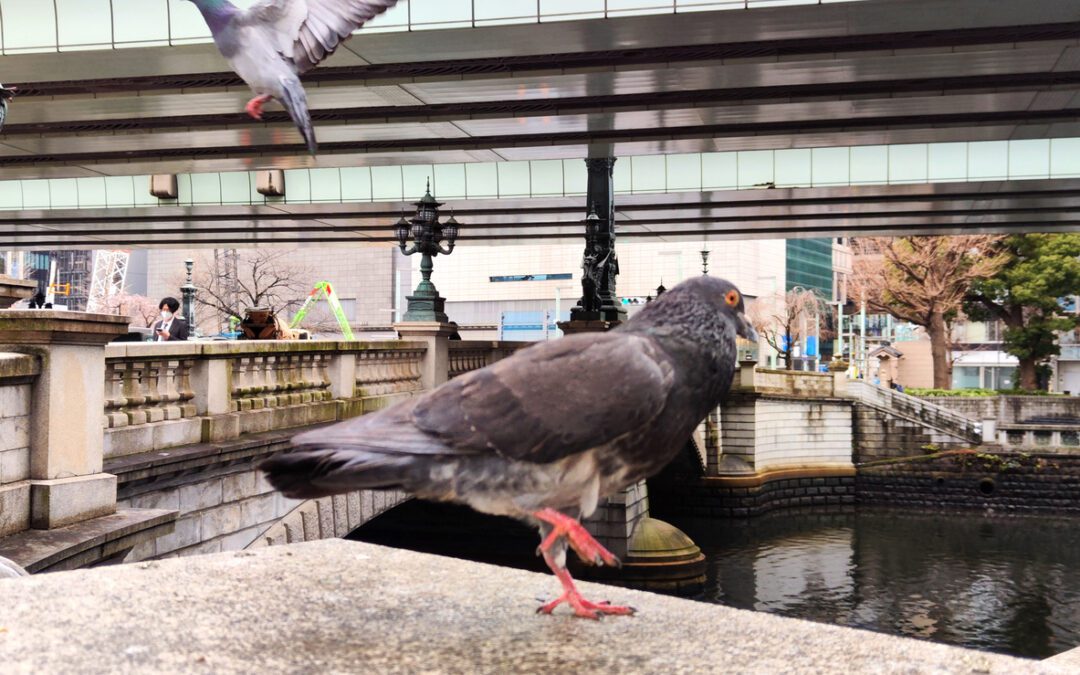
by Pigeon Patrol | Sep 19, 2024 | Bird Spikes, Columbidae, Doves
Passenger pigeons, so abundant during the early 19th century that skies darkened with passing flocks, may often have been nothing special in numbers during much of their last million years.
DNA from the extinct species, coaxed from toe pads of three museum specimens, suggests that population numbers fluctuated in the long term. The breeding population could have been at times only roughly several hundred thousand or even just tens of thousands of birds, says Chih-Ming Hung of National Taiwan Normal University in Taipei.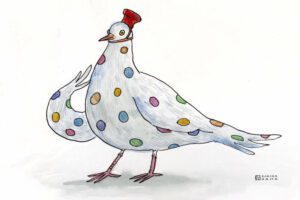
That’s a surprise. A survey of various other animals suggests that the size of the breeding population, like that pulled from the pigeon DNA, is typically about one-tenth of the whole population, Hung says. Yet the estimates of breeding populations in the new study are only one ten-thousandth of the 3 billion to 5 billion birds estimated in 19th-century eyewitness reports.
Hung doesn’t dispute those huge 19th century estimates. The DNA tells a story of bird numbers that soared and sank over time, he and his colleagues argue June 16 in the Proceedings of the National Academy of Sciences. He would need more analysis, he says, to see if an extreme crash during the most recent Ice Age would have produced such a skewed ratio in the last century. Or, in a more controversial scenario, he proposes that passenger pigeons may have had population booms and busts repeatedly on much shorter time scales.
Hung became curious about genetic trends of the passenger pigeon after a pivotal conversation several years ago regarding the 100th anniversary this September of the death of Martha, a passenger pigeon in the Cincinnati Zoo and the last known individual of the species.
Museum specimens’ toe pads provide the best picture yet of passenger pigeon genetics, Hung says. From the amount of variation the researchers found in the specimens’ DNA, they could work out an approximate number for the birds that were passing on their genes, called the effective population size.
Over the last million years, Hung and his colleagues found, the typical number of breeding birds could have averaged something like 330,000. Another method found lower numbers but a similarly small order of magnitude: 170,000 at the population’s height to perhaps 50,000 at its worst. The ups and downs over deep history fit with the timing of glacial cycles and with computer simulations of the niches available for the birds as climate changed.
Genetic tests can’t detect population ups and downs at the scale of a mere century. But Hung and his colleagues speculate that pigeon populations might have fluctuated in the short term too, perhaps shrinking drastically during times of skimpy acorns.
In theory, a species that surges in mind-boggling numbers certainly can go extinct quickly, says entomologist Jeffrey A. Lockwood of the University of Wyoming. The Rocky Mountain locust (Melanoplus spretus) is an example that savaged wide swaths of cropland during its booms but abruptly went extinct at the end of the 19th century when farmers took over the very specific habitats it needed to breed.
But passenger pigeons couldn’t have boomed in huge numbers quickly, says conservation biologist Stanley Temple of the University of Wisconsin–Madison. The birds tended just one nest a year and raised one chick. “There is absolutely no way these birds could rapidly increase their numbers,” he says. “It would take them probably centuries to increase their population even tenfold, let alone several orders of magnitude.”
Hung and critics agree that natural cycles, either short- or long-term, do not mean that the passenger pigeon would have eventually cycled into oblivion on its own. David Blockstein, senior scientist at the National Council for Science and the Environment in Washington, D.C., has described how intensive shooting at breeding colonies contributed to the species’ demise by disrupting its reproduction. And ecologist Stuart Pimm of Duke University says, “The basic cause for the passenger pigeon’s decline was the destruction of the Eastern forests.” The message of the paper, Hung says, is that “the passenger pigeon had repeatedly recovered from population lows throughout its history.” Then came 19th-century humans.
Pigeon Patrol
Pigeon Patrol Products & Services is the leading manufacturer and distributor of bird deterrent (control) products in Canada. Pigeon Patrol products have solved pest bird problems in industrial, commercial, and residential settings since 2000, by using safe and humane bird deterrents with only bird and animal -friendly solutions. At Pigeon Patrol, we manufacture and offer a variety of bird deterrents, ranging from Ultra-flex Bird Spikes with UV protection, Bird Netting, 4-S Bird Gel and the best Ultrasonic and audible sound devices on the market today.
Canada’s top wholesaler for bird deterrent products for twelve consecutive years.
Contact us at 1- 877– 4– NO-BIRD, (604) 585-9279 or visit our website at https://www.pigeonpatrol.ca/
Bird Gone, Pigeon Gone, Pigeon problems, pigeon spikes, 1-877-4NO-BIRD, 4-S Gel, Bird Control, Pigeon Control, bird repellent, Bird Spikes, sonic bird repellent, stainless steel bird spikes, bird spikes Vancouver, Ultra Sonic Bird Control, Bird Netting, Plastic Bird Spikes, Canada bird spike deterrents, Pigeon Pests, B Gone Pigeon, Pigeon Patrol, pest controller, pest control operator, pest control technician, Pigeon Control Products, humane pigeon spikes, pigeon deterrents, pigeon traps, Pigeon repellents, Sound & Laser Deterrents, wildlife control, raccoon, skunk, squirrel deterrent, De-Fence Spikes, Dragons Den, Pigeon, Pigeon Patrol, Pigeons Roosting, Vancouver Pigeon Control, Bird Spikes, Bird Control, Bird Deterrent, Pigeon Deterrent, Surrey Pigeon Control, Pest, Seagull deterrent Vancouver Pigeon Blog, Birds Inside Home De-fence, Pigeon Nesting, Bird Droppings, Pigeon Dropping, woodpecker control, Keep The Birds Away, Birds/rats, seagull, pigeon, woodpecker, dove, sparrow, pidgeon control, pidgeon problem, pidgeon control, flying rats, pigeon Problems, bird netting, bird gel, bird spray, bird nails, bird guard, Pigeon control, Bird deterrents, Pigeon deterrents, Bird control, solutions, Pigeon prevention, Pigeon repellent, Bird proofing, Pest bird management, Pigeon spikes, Bird netting, Humane bird control, Bird exclusion, Urban bird control, Anti-roosting devices, Pigeon removal, Bird barriers
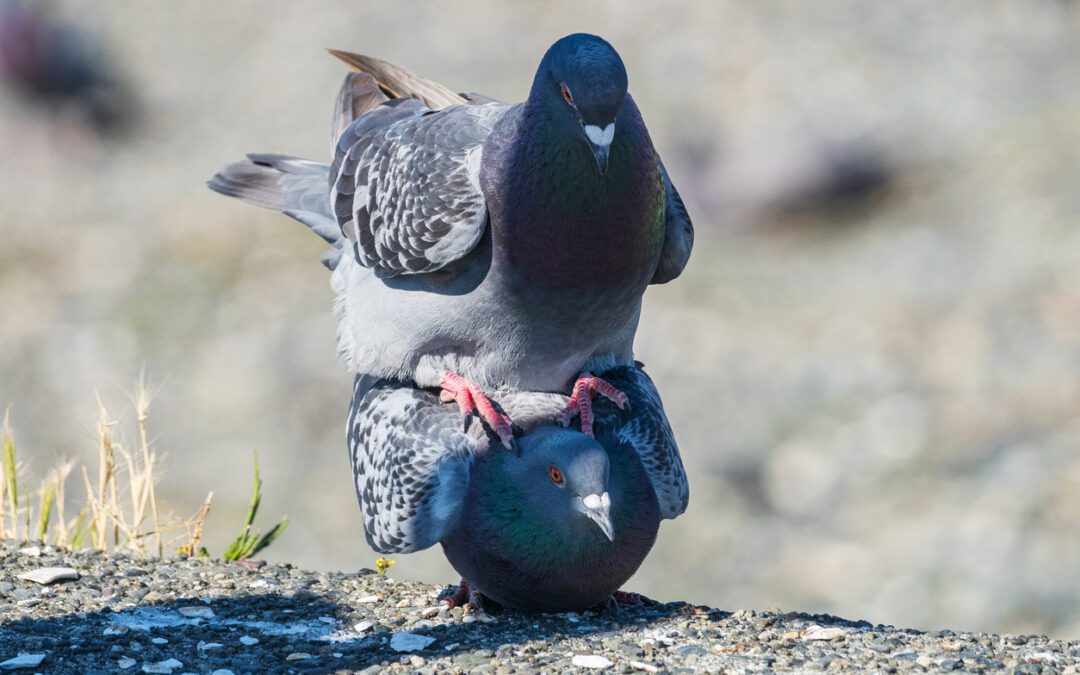
by Pigeon Patrol | Sep 19, 2024 | Bird Law, Bird Netting, Bird Spikes, Columbidae
If you’ve been around Ryerson, chances are that you have heard of, or maybe even got the chance to see, the one-legged pigeon. This famous icon is well-known for roaming the campus, along with being one of the school’s greatest memes.
When The Eye spoke with the pigeons five years ago, there were reports of a second wave of the Pigeons’ Movement. Recently, we have been in contact with some inside voices. After deciphering their coo-coos and squawks, it turns out that the second wave Pigeons’ Movement fell through because the leading figure went missing—the one-legged pigeon.
To get to the bottom of this, I set out to find her. It would be no easy task—the only way to do that is to explore every inch of Ryerson. Her Twitter hasn’t been updated since 2014. While searching around campus, I encountered many pigeons. But to the demise of the entire student body, all these pigeons had two legs.
All of the pigeons were quite strange. There were many different pigeons—concrete pecking, bread pecking, aggressive wing flapping. None of the pigeons could even gracefully win in a breadcrumb fight. The pigeon community has really taken a hit since this tragedy struck.
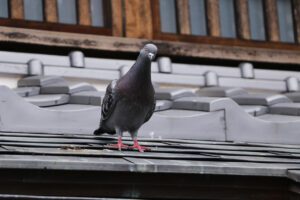
I asked the pigeons if they knew anything about the word on the street, but none had any useful information. It seems as though the pigeon’s movement is no longer birds of a feather. Actually, some of them even seemed bird-brained.
The regular day-to-day pigeons weren’t much help, but we searched the dustiest of alleyways and found a lone pigeon smoking a cigarette and wearing a trenchcoat.
After demanding a payment of seven Ritz crackers, he told us one of his feathered associates received a telepathic message that the one-legged pigeon is still alive, and is planning something big. We still don’t know if what the mysterious pigeon’s associate’s friend said was reliable or true. Due to not wanting to suffer an Alfred Hitchcock-esque death and get picked to pieces by the pigeons, we did not press further.
For now, unfortunately, the one-legged pigeon is still missing. Alas, I still have hope. I won’t stop working on this story. I’m willing to bet my last One Card dollars that Ryerson will be blessed with the return of this legend.
Pigeon Patrol
Pigeon Patrol Products & Services is the leading manufacturer and distributor of bird deterrent (control) products in Canada. Pigeon Patrol products have solved pest bird problems in industrial, commercial, and residential settings since 2000, by using safe and humane bird deterrents with only bird and animal -friendly solutions. At Pigeon Patrol, we manufacture and offer a variety of bird deterrents, ranging from Ultra-flex Bird Spikes with UV protection, Bird Netting, 4-S Bird Gel and the best Ultrasonic and audible sound devices on the market today.
Canada’s top wholesaler for bird deterrent products for twelve consecutive years.
Contact us at 1- 877– 4– NO-BIRD, (604) 585-9279 or visit our website at https://www.pigeonpatrol.ca/
Bird Gone, Pigeon Gone, Pigeon problems, pigeon spikes, 1-877-4NO-BIRD, 4-S Gel, Bird Control, Pigeon Control, bird repellent, Bird Spikes, sonic bird repellent, stainless steel bird spikes, bird spikes Vancouver, Ultra Sonic Bird Control, Bird Netting, Plastic Bird Spikes, Canada bird spike deterrents, Pigeon Pests, B Gone Pigeon, Pigeon Patrol, pest controller, pest control operator, pest control technician, Pigeon Control Products, humane pigeon spikes, pigeon deterrents, pigeon traps, Pigeon repellents, Sound & Laser Deterrents, wildlife control, raccoon, skunk, squirrel deterrent, De-Fence Spikes, Dragons Den, Pigeon, Pigeon Patrol, Pigeons Roosting, Vancouver Pigeon Control, Bird Spikes, Bird Control, Bird Deterrent, Pigeon Deterrent, Surrey Pigeon Control, Pest, Seagull deterrent Vancouver Pigeon Blog, Birds Inside Home De-fence, Pigeon Nesting, Bird Droppings, Pigeon Dropping, woodpecker control, Keep The Birds Away, Birds/rats, seagull, pigeon, woodpecker, dove, sparrow, pidgeon control, pidgeon problem, pidgeon control, flying rats, pigeon Problems, bird netting, bird gel, bird spray, bird nails, bird guard, Pigeon control, Bird deterrents, Pigeon deterrents, Bird control, solutions, Pigeon prevention, Pigeon repellent, Bird proofing, Pest bird management, Pigeon spikes, Bird netting, Humane bird control, Bird exclusion, Urban bird control, Anti-roosting devices, Pigeon removal, Bird barriers
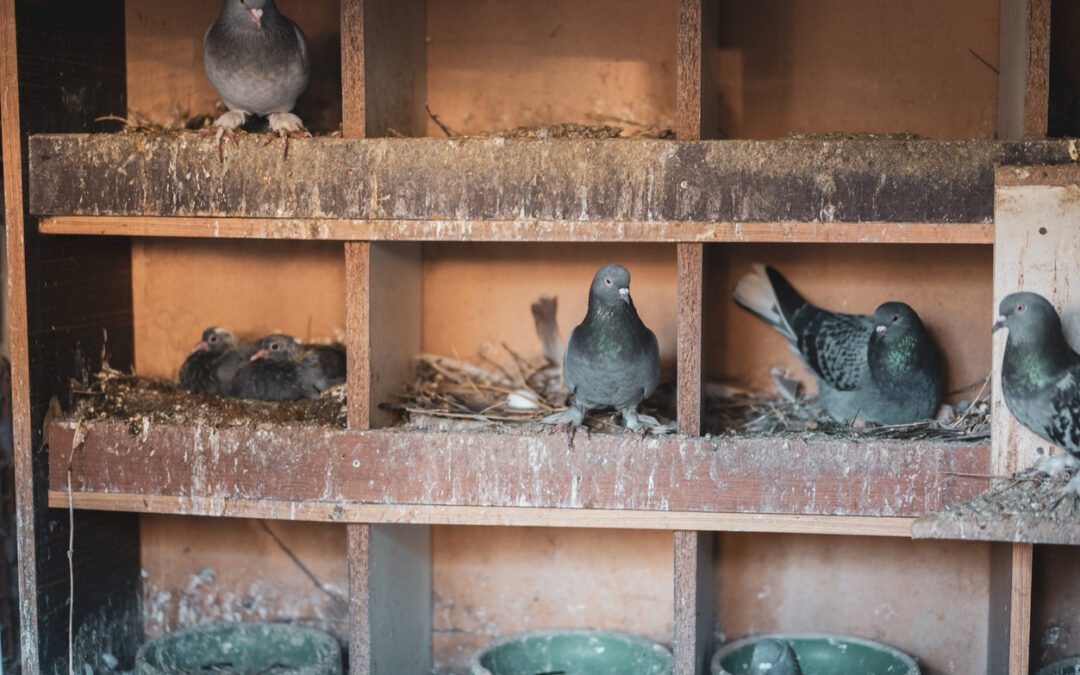
by Pigeon Patrol | Jul 9, 2024 | Animal Deterrent Products, Bird Netting, Bird Spike, Columbidae, Pigeon Spikes, Pigeons, Sparrows
Eagles and falcons deployed to scare away pigeons in Barcelona
This article is more than 3 months old Trial project aims to drive colonies causing a nuisance at Camp Nou football stadium to nearby parks
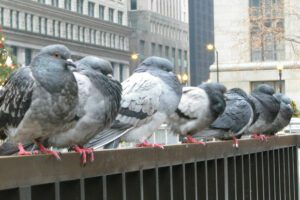
Barcelona has recruited a new weapon in its fight to keep the urban pigeon population under control: eagles and falcons.
As part of a trial, teams of three or four birds of prey have started patrolling an area around Camp Nou, FC Barcelona’s football ground, between 8am and 4pm. Pigeons nesting in the ground have been driven out by building works and have relocated to nearby blocks of flats whose residents have demanded action.
The idea is to drive the pigeons into nearby parks where they will be less of a nuisance.
“The birds can eat a few pigeons but that’s not the idea,” said Albert Tomás, a spokesperson for the company contracted to carry out the work. “Besides, a dead pigeon doesn’t learn.”
The mere sight of low-flying birds of prey was enough to unsettle the pigeons, which soon get the message that it was time to move on, said Tomás.
The pilot scheme follows the city’s failed effort to control the population of the estimated 85,000 pigeons through spiking their food with a contraceptive.
In some areas, such as the Plaça de Catalunya in the city centre, the concentration of birds is twice the recommended number.
In 2017 the city successfully used birds of prey to disperse flocks of pigeons that were damaging the roof of the Palau Sant Jordi concert hall.
Carmen Maté, responsible for animal welfare in the city, said that if the Camp Nou pilot proved successful it would be extended to other parts of Barcelona. The city is also campaigning to stop people discarding food in the street, which encourages the growth of the pigeon population.
Most Spanish airports use teams of falcons to deter bird strikes which are estimated to cost the global airline industry $1.2bn (£950,000) a year.
Barcelona airport has a team of 80 falcons, while about 70 peregrine falcons patrol Barajas airport in Madrid.
This is what we’re up against
Teams of lawyers from the rich and powerful trying to stop us publishing stories they don’t want you to see.
Lobby groups with opaque funding who are determined to undermine facts about the climate emergency and other established science.
Pigeon Patrol
Pigeon Patrol Products & Services is the leading manufacturer and distributor of bird deterrent (control) products in Canada. Pigeon Patrol products have solved pest bird problems in industrial, commercial, and residential settings since 2000, by using safe and humane bird deterrents with only bird and animal friendly solutions. At Pigeon Patrol, we manufacture and offer a variety of bird deterrents, ranging from Ultra-flex Bird Spikes with UV protection, Bird Netting, 4-S Bird Gel and the best Ultrasonic and audible sound devices on the market today.
Canada’s top wholesaler for bird deterrent products for twelve consecutive years.
Contact us at 1- 877– 4– NO-BIRD, (604) 585-9279 or visit our website at https://www.pigeonpatrol.ca/
Bird Gone, Pigeon Gone, Pigeon problems, pigeon spikes, 1-877-4NO-BIRD, 4-S Gel, Bird Control, Pigeon Control, bird repellent, Bird Spikes, sonic bird repellent, stainless steel bird spikes, bird spikes Vancouver, Ultra Sonic Bird Control, Bird Netting, Plastic Bird Spikes, Canada bird spike deterrents, Pigeon Pests, B Gone Pigeon, Pigeon Patrol, pest controller, pest control operator, pest control technician, Pigeon Control Products, humane pigeon spikes, pigeon deterrents, pigeon traps, Pigeon repellents, Sound & Laser Deterrents, wildlife control, raccoon, skunk, squirrel deterrent, De-Fence Spikes, Dragons Den, Pigeon, Pigeon Patrol, Pigeons Roosting, Vancouver Pigeon Control, Bird Spikes, Bird Control, Bird Deterrent, Pigeon Deterrent, Surrey Pigeon Control, Pest, Seagull deterrent Vancouver Pigeon Blog, Birds Inside Home De-fence, Pigeon Nesting, Bird Droppings, Pigeon Dropping, woodpecker control, Keep The Birds Away, Birds/rats, seagull, pigeon, woodpecker, dove, sparrow, pidgeon control, pidgeon problem, pidgeon control, flying rats, pigeon Problems, bird netting, bird gel, bird spray, bird nails, bird guard, Pigeon control, Bird deterrents, Pigeon deterrents, Bird control, solutions, Pigeon prevention, Pigeon repellent, Bird proofing, Pest bird management, Pigeon spikes, Bird netting, Humane bird control, Bird exclusion, Urban bird control, Anti-roosting devices, Pigeon removal, Bird barriers












